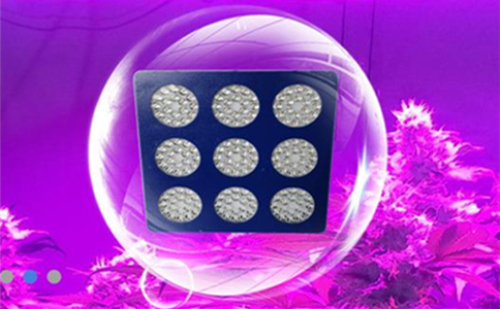
Introduction: Plants can be divided into long-day plants (LDP), short-dayplants (SDP), and mid-day plants based on the type of response to the length of sunlight during a certain period of development. Day-neutral plant (abbreviated as DNP). LDP refers to plants that must spend longer than a certain number of days each day and spend a certain number of days before flowering. Such as winter wheat, barley, rape, angels, sweet-scented osmanthus, and sugar beets, and the longer the light, the earlier the flowering.
SDP refers to plants that must spend less than a certain number of days each day in order to bloom. If light is shortened properly, it can bloom in advance, but if the light is lengthened, it will delay flowering or fail to bloom. Such as rice, cotton, soybeans, tobacco, Begonia, chrysanthemum, morning glory and cocklebur. DNP refers to plants that can bloom under any sunshine conditions, such as tomatoes, cucumbers, Chinese rose and clivia.
The key issues in the application of photoperiodic regulation in flowering plants
1. Plant critical day length
The critical day length of a plant is the shortest day of sunshine necessary to induce the longest sunshine in a plant during the day and night, or to induce long-day plant flowering. For LDP, the day length is longer than the critical day, and even 24 hours can bloom. But for the SDP, the length of day must be less than the critical day to bloom, but too short to bloom. The Institute of Semiconductors of the Chinese Academy of Sciences and Baoding Dazheng Co., Ltd. shall fully consider Chrysanthemum as an SDP factor in the project of feeding chrysanthemum supplements to the Huitian Agricultural Cooperative in Beijing.
2. Plant flowering key and artificial control of photoperiod
SDP flowering depends on the length of the dark period and does not depend on the length of the light. The length of sunshine required for flowering of LDP is not necessarily longer than the length of sunshine required for SDP flowering.
Understanding the key to plant flowering and the type of photoperiodic response can extend or shorten the length of sunshine in the greenhouse, control flowering, and solve the problem of poor flowering. Artificially prolonging the light can accelerate the flowering of long-day plants, shorten the light properly, and promote the flowering of short-day plants earlier. If you want to delay flowering or not flowering, you can set the operation in reverse. If long daylight plants are cultivated in the tropics, they will not bloom due to lack of light. Similarly, short-day plant cultivation will not bloom in the temperate and frigid zones due to long exposure time.
3. Introduction and breeding work
The artificial control of the photoperiod of plants is of great importance to the introduction and breeding of plants. For the SDP, northern seeds are introduced into the South, and flowering is needed in advance. Late-maturing varieties are required. In the same way that the southern species moves northward, early maturing species are required; for LDP, the northern seeds are introduced into the south, and flowering is delayed, and early maturing species are required. In the same way that the southern species moves north, late-maturing varieties are needed. For example, the Malvaceae genus Roselle is SDP. If the southern species moves northward, the vegetative growth period will be prolonged. Buds, blossoms, and seedlings lag behind and are vulnerable to early frost damage. At this time, you should know that you need to shave.
4. Flowering induction of red light and far red light
Photofrin mainly receives red (Pr) and far-red (Pfr) signals, affecting plant flowering induction. The flowering effect is not determined by the absolute amount of Pr and Pfr but by the Pfr/Pr ratio. SDP blooms at a lower Pfr/Pr ratio, whereas the formation of LDP flowering stimulants requires a relatively high Pfr/Pr ratio. If the dark period is interrupted by red light, the ratio of Pfr/Pr increases and the SDP flowering is inhibited. LDP requires less Pfr/Pr ratio than SDP, but sufficiently long illumination time, high irradiance, and far-red light illumination are indispensable for inducing LDP flowering.
Source: Dandong Guangyuan Technology Co., Ltd.
In the past 20 years, we have rich experience in design and production standards, won a good reputation at home and abroad. With Casters to customers in North America, Europe, Asia, Australia, South Africa and the Middle East, we experience also let us understand the needs of the international market, fast delivery and safe use. The company has 150 units/sets of production equipment, 2 pouring PU production line, 2 rubber vulcanization production line , 10 sets of large-scale injection molding equipment, automatic welding equipment, equipped with professional level of production to modernize. Using the fully and semi-automatic machinery to achieve excellence in technology and the production of consistency; Research and development team using advanced CAD/CAM software and three-dimensional software design OEM caster; Equipped with professional mold development workshop, by professional engineers to adjust the existing model, constantly updated design, so as to adapt to the changing demands of customers at home and abroad.
we have hard rubber caster wheels,light duty swivel caster,industrial swivel caster,trolley caster,rubber wheels caster.
Wheel Casters,Steel Caster,Gravity Caster,Casters Wheel
BAODING JIMAOTONG IMPORT AND EXPORT CO., LTD , https://www.chinagroundscrew.com